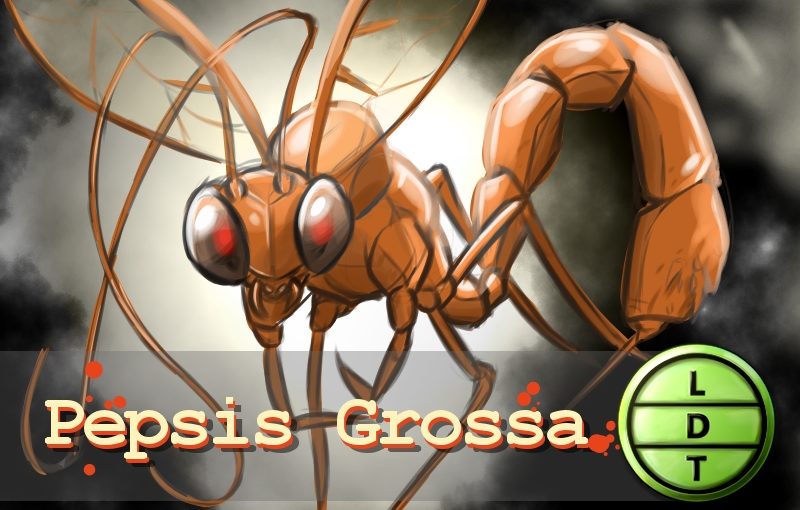“…and today we’re talking about a creepy crawly with a nasty sting that might be living in your backyard.”
K – Animalia P – Arthropoda C – Insecta O – Hymenoptera (wasps, bees, yellow jackets, hornets) F – Pompilidae (parasitic wasps) SubF – Pepsinae G – Pepsis S – Gross
Spider Parasites
- While an adult tarantula hawk is nectivorous (it only eats nectar), the same cannot be said of its larva stage
- When a female tarantula hawk has mated, it will start looking for a place to lay its egg. (single egg)
- Most animals like to lay their eggs in a place that is safe and has an abundant food source, and our friend quentin tarantula hawk is no different.
- She will find a nice quiet tarantula to settle down on, you know, something out in the country. Then she’ll sting it with what is likely the worst insect sting imaginable.
- Seriously, this thing is bad. For humans, it’s been called one of the most painful stings on earth.
- One researcher said that the sting is “…immediate, excruciating, unrelenting pain that simply shuts down one’s ability to do anything, except scream. Mental discipline simply does not work in these situations.”
- The actual guy who came up with the sting pain index, Justin Schmidt, called it “blinding, fierce, and shockingly electric”.
- Second on the pain index losing to the bullet ant
- The sting is not fatal to anyone who doesn’t have an allergy and the pain lasts for about five minutes.
- For tarantulas, the sting paralyzes them
- The wasp squares off with the spider and hits it with one sting to get things going. The spider will be crippled but still mobile. Then the wasp will sting it a few more times.
- I saw a video where the wasp got on its back and crawled under the spider, like it was a mechanic inspecting its chassis
- Then the wasp drags the spider’s limp, hairy body to the spider’s own lair and attaches its egg to the spider’s abdomen before sealing the entrance to the lair
- Then, the larva hatches and starts eating the paralyzed spider from the inside out, being careful to avoid vital organs so the spider stays alive for as long as possible.
- When the spider is nothing but a hairy husk, the larva leaves to pupate and mature

